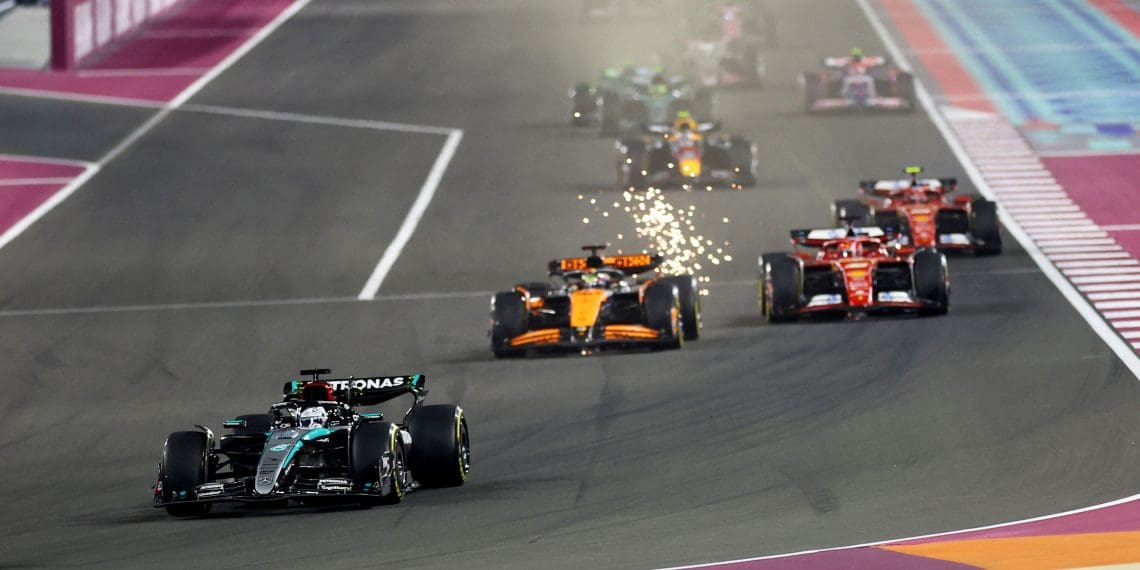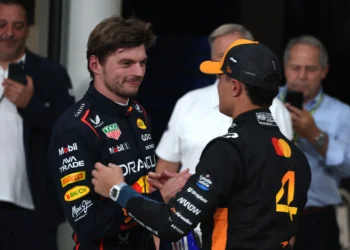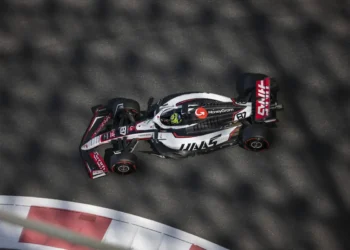The 2024 Formula 1 season was a rollercoaster for Mercedes, punctuated by brief moments of brilliance and extended periods of frustration. Toto Wolff’s tongue-in-cheek remark about Mercedes earning the title of “dirty track champions” encapsulates the team’s struggles and highlights a baffling trend: excelling on green tracks during FP1, only to falter as the weekend progressed.
The Pattern: Early Pacesetters, Weekend Faders
Mercedes showed a knack for topping the timing sheets in early practice sessions when track conditions were at their dirtiest, showcasing initial competitiveness. However, as grip levels increased and rivals unlocked their setups, Mercedes seemed unable to maintain its edge.
“FP1 is always great, and then the moment the grip kicks in, we’ve seen that the performances deteriorate,” Wolff candidly remarked.
This phenomenon was a persistent theme, with early optimism often giving way to disappointment by the time the cars lined up on the grid.
The W15: A Troubled Machine
The 2024 season saw Mercedes struggle with a car that neither driver could fully trust, particularly Lewis Hamilton. While the team scored four victories, the W15 was plagued by fundamental issues that left the car unpredictable and inconsistent across varying track conditions.
Hamilton and George Russell both voiced frustrations throughout the year, with Russell’s occasional optimism often tempered by setbacks in subsequent races. Wolff admitted that despite progress, the team repeatedly found itself taking “the wrong junctions” with upgrades and development routes.
The Highs: Canada to Summer Break Surge
Mercedes appeared to crack the ground effect code briefly mid-season, delivering upgrades in Canada that led to three wins in four races before the summer break. This stretch offered hope that the eight-time Constructors’ Champions could regain their form.
The Lows: Post-Summer Stumbles
Unfortunately, momentum unraveled following the break:
- Belgium: A revised floor was abandoned after it failed to deliver the expected gains.
- Austin: A new package caused more headaches than solutions, raising questions about the team’s development trajectory.
Even with Russell insisting that the team “understood the issues” by season’s end, Wolff remained cautious, reflecting on how often their confidence had been misplaced.
Wolff’s Sobering Perspective
The Mercedes team principal was blunt in his assessment of the season, noting the challenges of catching up once rivals had made progress.
“You can’t go back to a Silverstone upgrade and put it on the car and expect to be in the front because since then everybody else has improved by a couple of tenths.”
Wolff’s comments underscore how competitive the grid has become in the current era, with little room for error and fewer opportunities for quick fixes.
The Path Ahead: Lessons Learned?
Mercedes heads into 2025 facing significant challenges to bridge the gap to the likes of McLaren and Ferrari, let alone Red Bull. Wolff’s mantra of learning through failure resonates, but it’s clear that the team needs more than just lessons—they need a seismic breakthrough in car performance and setup adaptability.
With Hamilton and Russell continuing to spearhead the team, Mercedes will need to address its car’s core weaknesses while ensuring it doesn’t repeat the costly missteps of 2024. As Wolff aptly summarized:
“The more you drive, the more you fail, the more you learn. But the competition doesn’t sleep.”
Whether Mercedes can awaken from its own slump in time for 2025 remains to be seen, but it’s clear the team cannot afford to hit another wrong junction.










